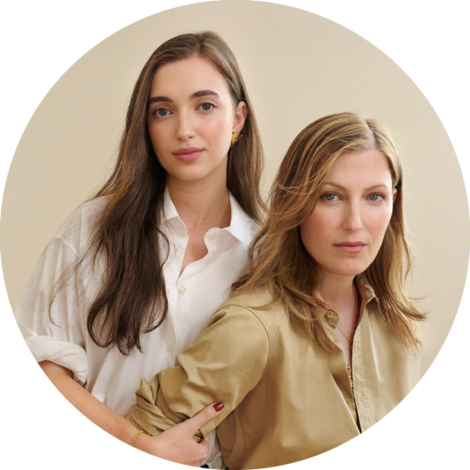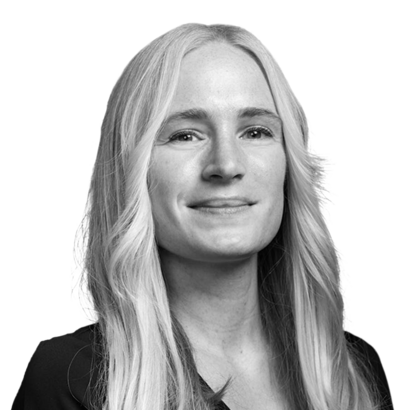The driver dispatched to collect Julien Farel appears to have learned his trade from The Italian Job. It’s early afternoon on the first day of the U.S. Open, and Farel, a French hairstylist who has helmed a salon for players and V.I.P. guests in Arthur Ashe Stadium during every U.S. Open since 2007, is speeding to the stadium from his salon in the Loews Regency New York, on Park Avenue. Every time the driver pulls an elite maneuver—careering across a swath of broken white lines into the exit lane, or zooming around a patch of stalled traffic on the shoulder and re-entering with such self-assurance that nobody dares to honk—Farel looks on admiringly.
“You used to be a police officer?” he asks the man as the vehicle whips into the stadium’s parking lot.
Farel is wearing white leather Golden Goose sneakers, a smoothly tailored deep-blue suit, and a light-blue shirt unbuttoned to his sternum, and when he leans forward to speak to the driver, a silver cross on a chain pendulums from his neck. “You are a pretty aggressive driver,” he says, and the man chuckles. No, he tells him, he’s not a cop. He’s just from New York.

Farel is serene in the face of the challenges the universe hurls his way, which on this Monday include several minutes of confusion among U.S. Open staff when he arrives to collect his credentials. But once he is armed with proper documentation, he strides past the players’ garden, where the athletes mingle and sprawl on low furniture—imagine Raphael’s School of Athens if everyone had diamond-hard calves—and marches up to the stadium’s third floor.
The salon is a cramped room off a hallway that leads to a fitness center for the players. The space accommodates three hair stations, two pedicure stations, and two manicure stations. Sometimes, says a stylist named Jonn Rhamani, who is wearing all white except for his orange plastic frames and orange sneakers, the players receive services next to competitors they will later play against. “They’ll ask us to do cuts on each other that shouldn’t be done,” he says with a laugh.
Rhamani and another stylist take a succession of clients while Farel looks on. He generally cuts only the best players’ hair and has a rapport with many of them, including Rafael Nadal, who has been visiting the salon since 2009. “In 2010, I cut his hair from long to short, and he won the tournament,” Farel says. After that, Nadal was a regular.
Farel has watched scores of players morph from wide-eyed wild cards into global forces. Through haircut small talk, he has also become sensitive to broader shifts in what it means to be an athlete. In the days of John McEnroe and Yannick Noah, he observes, players lived relatively normal lives off-court (if you count Studio 54 attendance as normal). Now athletes seem to take a more military approach. (Novak Djokovic once told Farel that he wakes up in the middle of the night to eat, then goes back to sleep.) “They’ve become—like in Rocky Balboa No. 4, with the Russian—true physical machines.”

The salon is an antidote to that rigidity. The most experienced players tend to use salon visits as an opportunity to decompress. On one occasion, Farel recalls, he cut Djokovic’s hair at six p.m., right before a major match. “For the younger players, they’re not thinking about doing their hair, looking good,” he says. “They don’t have the confidence to come to just relax. They only think about the game.”
The salon only takes same-day reservations, so haircut hopefuls must either call or assemble in person each morning to put their name down for a time slot. Top-seeded players, however, may walk in at any time, bumping those with lower rankings from their chairs. The U.S. Open’s early days are the salon’s busiest because as players lose their matches, they also lose access to the tournament’s amenities. When the woman handling reception turns away one attempted walk-in, a male player in a blue polo, he is unbothered. “If I get a haircut now, it will grow back by September 10,” he tells her with wry optimism—the men’s final falls on September 10.
“They’ve become—like in Rocky Balboa No. 4, with the Russian—true physical machines.”
A bubbly 26-year-old American player named Sophie Chang arrives for her time slot and spots Farel. Even if one did not know what he looked like, he’d be the best guess in a game of Spot the French Stylist. He has magnificent hair—“cover of a romance novel” hair—the volume and density of which he attributes to his Hydrate Restore, a treatment he sells. Chang nervously asks whether Farel himself might cut her hair, and he agrees, looking a little amused.
“When was the last time you got your hair cut?” he asks as he shakes her long brown hair out of its ponytail and begins shampooing it.
“Wimbledon,” she replies.
“And when will your next one be?”
“Melbourne,” she says, referring to the Australian Open, in January.
Chang’s first Grand Slam was the 2016 U.S. Open, when she won the playoff and earned a wild-card entry. Back then she was awed by the amenities, but now she is more seasoned: she played in all four major tournaments this past year, and she saloned globally. “I only get it done at the Grand Slams,” she tells Farel as he combs out her hair and studies her face in the mirror. He asks her to stand; at six feet one, she is a head taller than he is. He guides her back into the chair and goes to work.
As Farel is drying and finishing Chang’s hair, Donna Vekić, a 27-year-old Croatian player currently ranked 22nd, steps into the salon. Farel greets her familiarly, and they catch up while he works. Chang waits for a lull in their conversation, then catches Vekić’s eye in the mirror and asks her about her coach, Pam Shriver, who, like Chang, is from Maryland. Then Farel puts down the curling iron he’s been using, and everyone is quiet as he flounces Chang’s hair once. It falls in perfect bouncy treble clefs around her face and shoulders. “You are a lucky girl, you know?” Vekić says. Chang is beaming. “I know!”
Lauren Larson is an Austin, Texas–based writer and editor. Her work appears in GQ, Texas Monthly, The New York Times, and New York magazine





